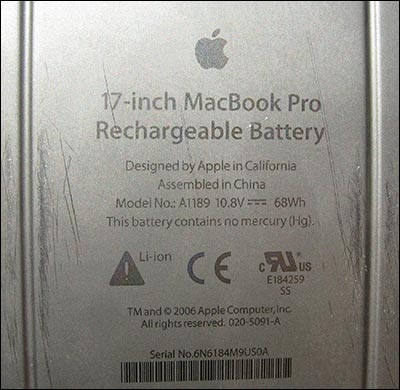If I’ve learned anything recently, it’s this: If Bill Gates is the devil, then Peter Norton is the anti-christ.
One of my friends has reported meeting the man, conveying that not only was Peter Norton arrogant in the extreme, but his ego was just as large. …unfortunately, I have no way of knowing first hand if this is true, but when it comes to Symantec’s anti-virus and internet security software, the similarities in web reports is uncanny.
Peter Norton, for those of you who don’t remember, was this great guy back when PCs were young. Using assembly language, he wrote a cool set of utilities, known as the Norton Utilities, to let you inspect (and patch!) the raw data on your disk. This was fantastic, because if you accidentally deleted something, a basic understanding of file systems would allow you to get your file back. Microsoft had no clue at the time about how to undelete, and this tool made us into consulting gods. The next version of the software added more power and automation, but by version four it seemed Peter wasn’t writing it anymore, the software started to feel like bloated crap-ware. By version five it wasn’t even worth purchasing; apparently enough people were getting themselves into serious trouble in the same way that power tools don’t belong in certain people’s hands, and features were removed, obscured, or hindered. To the rest of the world it looked like Peter sold out and was willing to brand his famous name on anything void of quality in order to get another buck. The Norton name took on the same connotation that ‘Made in Japan’ had before Dr. Demming taught the Japanese how to kick the United States butt when it came to quality. It’s always a shame when this kind of thing happens, and Norton Anti-Virus was no different.
A while back we’d ordered some systems from Dell, and with them came a disc with Norton Anti-Virus. I threw mine in the garbage bin, my co-worker installed his. Instead, I used a number of free tools.
Not too mysteriously, over the course of a year, my co-worker’s machine did get some viruses, some which he couldn’t purge, leading to the machine having to be rebuilt at least once. Recently, Norton Anti-Virus told him his software expired and he needed to renew; so he did. Within the month his system was running so slow he simply ordered another machine, decommissioning his high end desktop system to a deployment staging server — and I was the lucky guy who got to clean the mess.
Normally, I would have just blown away the PC and started over, however with Microsoft’s new licensing scheme, if I had done that, I would have burned up a silver bullet. It doesn’t matter that I have the media, the machine, the license key, and a working copy of the software sitting in front of me — no, if I want to clean the system, I’m screwed, forced to pay for another license. And that I’m not going to do. As is, we’re already starting to switch, corporately, from MS-Office to OpenOffice due to costs; but I digress.
One thing was for sure, the system was dog slow, even with virtually everything else removed — the pig was clearly Norton, just as the benchmarks stated.
My goal was to simply remove anything and everything off the system, save some Microsoft programs which were installed and working, do some updates, and be done. This process went smoothly, with the exception of Norton Symantec software.
Uninstalling software on Windows is supposed to be easy, go to the control panel and select uninstall. Norton Anti-Virus and Internet Security certainly had that option, but it refused to uninstall claiming an update was in progress. Problem was, I could see the internet traffic as well as my CPU activity, and there was no update. Not even after a reboot. So, I went to uninstall the live update, which complained services were still running, and when I went to stop the services, they claimed the software was in use. When I went to delete files directly, it claimed the service had them in use.
I eventually booted in console mode and started deleting folders and files, relying heavily on Registry Mechanic to clean up the registry based on what I was doing. Problem was, when I restarted, Norton put some of it’s stuff back. Seems that there’s stuff in Program Files, there’s stuff in Common Files, it’s called Norton here and Symantec there, it’s got a zillion files spread all over, include the user’s Temp directory, it runs as programs, it runs as services, it hides in dark corners, it lives in your status bar. Norton does everything, even when it claims it’s turned off, uninstalled, and removed just to hang around on your system. It doesn’t clean up after itself.
It literally took me six hours, and I knew what I was doing, to get all of Norton’s software off the machine. And when I did the results were astounding, the sluggish little PC sprang back to life.
We also discovered that certain commercial download websites wouldn’t function when Norton was installed; other’s had perplexing places where content was just missing. Norton was twiddling with web site content, injecting it’s own JavaScript, screwing up the pages.
The good news is that all this served as the perfect example for the office to abandon Norton / Symantec products altogether. I’m happy to report Norton isn’t going on any new machines, and it’s now off on all but one (which it will be removed from in due course).
Software doesn’t have to be intrusive, expensive, or bloated with renewable licenses to get the job done.
For those interested, assuming everything goes right, here’s how to completely remove Norton. Although, for me, things did not go right, and a more intensive sweep showed there was still cruft. There’s even stuff left in the registry. Heaven help you your copy is corrupted either by normal XP wear’n’tear or by a virus that knows how to neuter Norton. For a company that’s supposed to be fighting to prevent things from getting installed on your machine that you don’t want, they certainly seem hypocritical. At least they offer, burried on their website though, a tool that’s supposed to remove the software “completely.”
Walt gives everything from Symantec or branded with the Peter Norton name after 1986 a thumbs down.
 Today I went to Target, and there in the DVD section was Battlestar Galactica: Razor.
Today I went to Target, and there in the DVD section was Battlestar Galactica: Razor.







